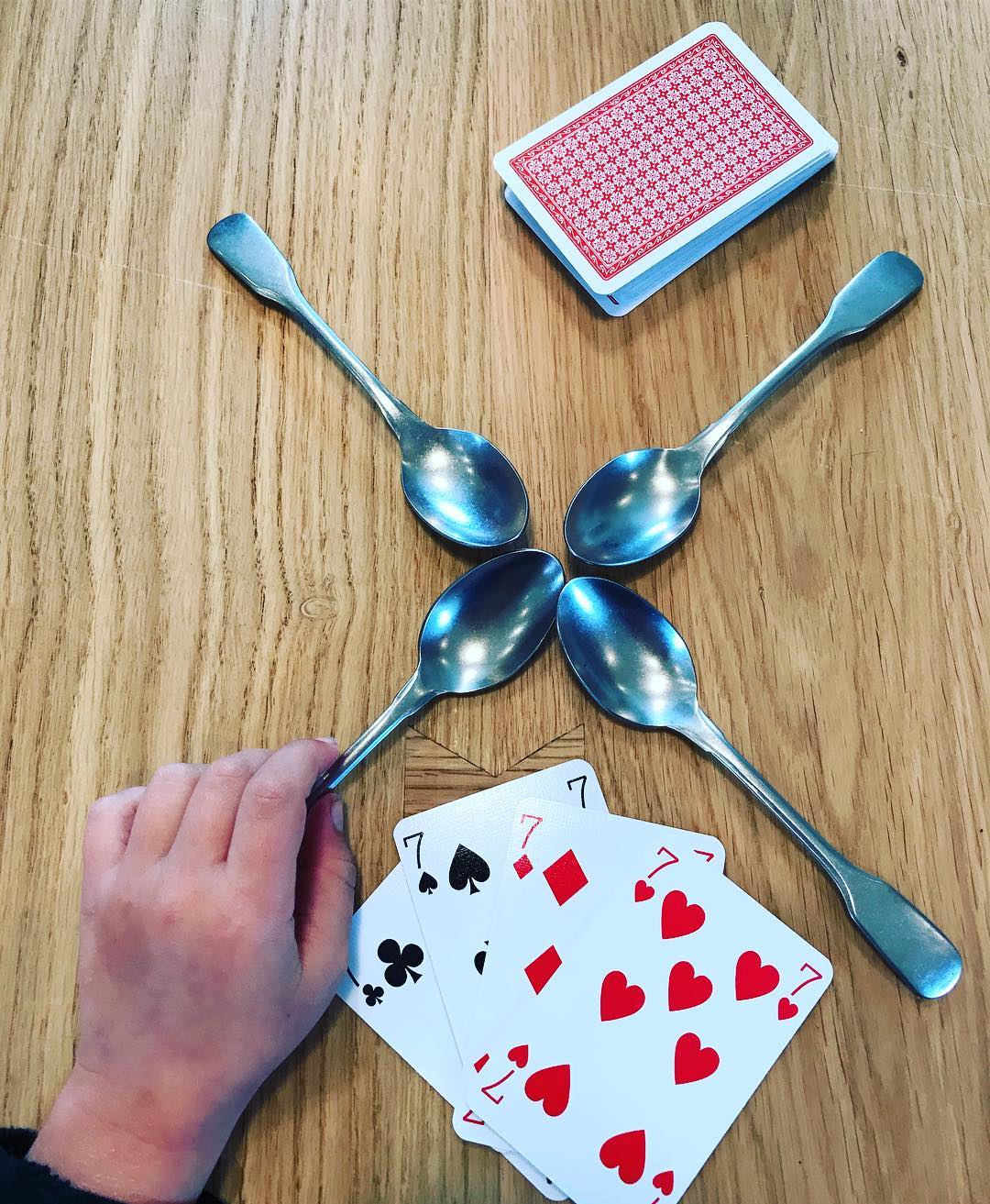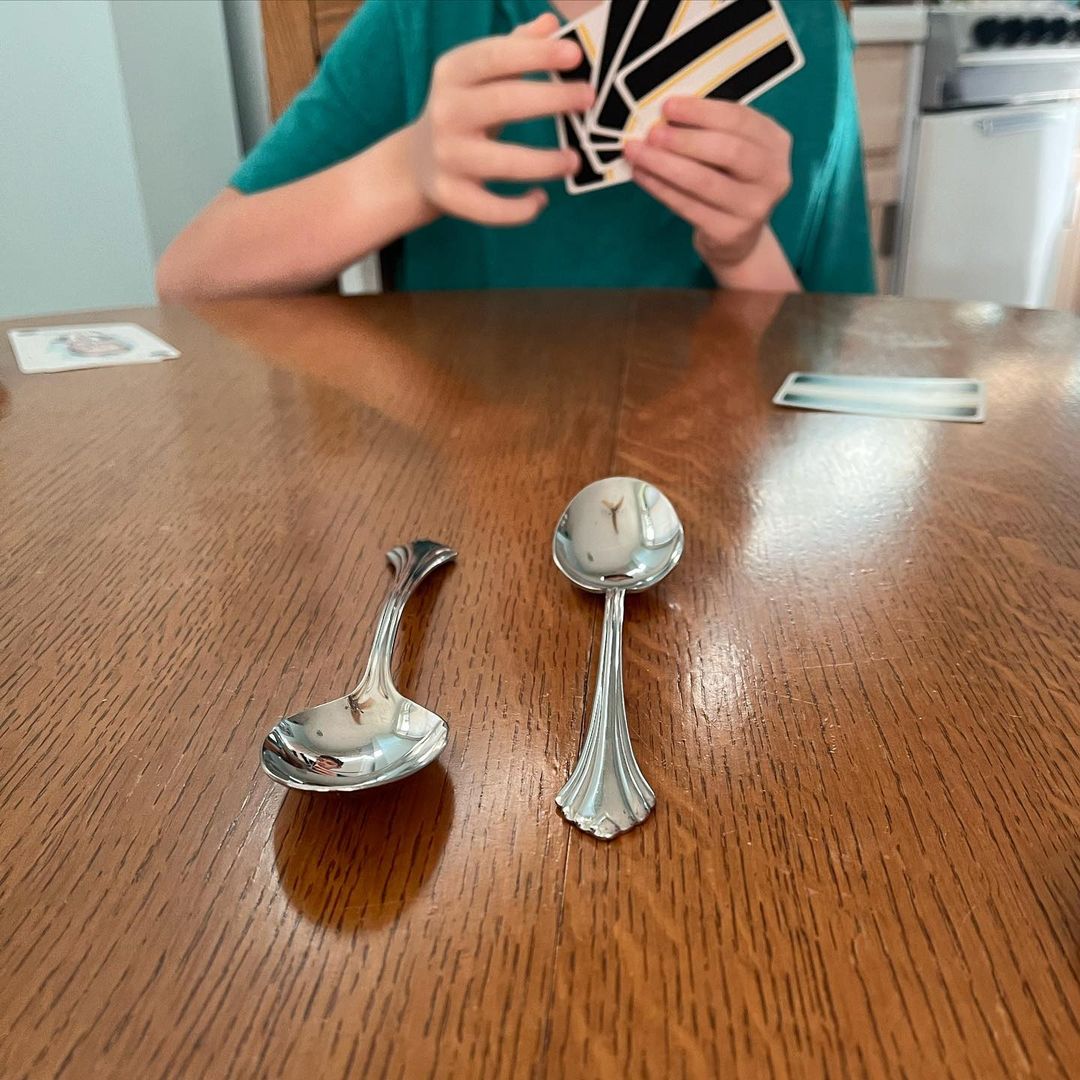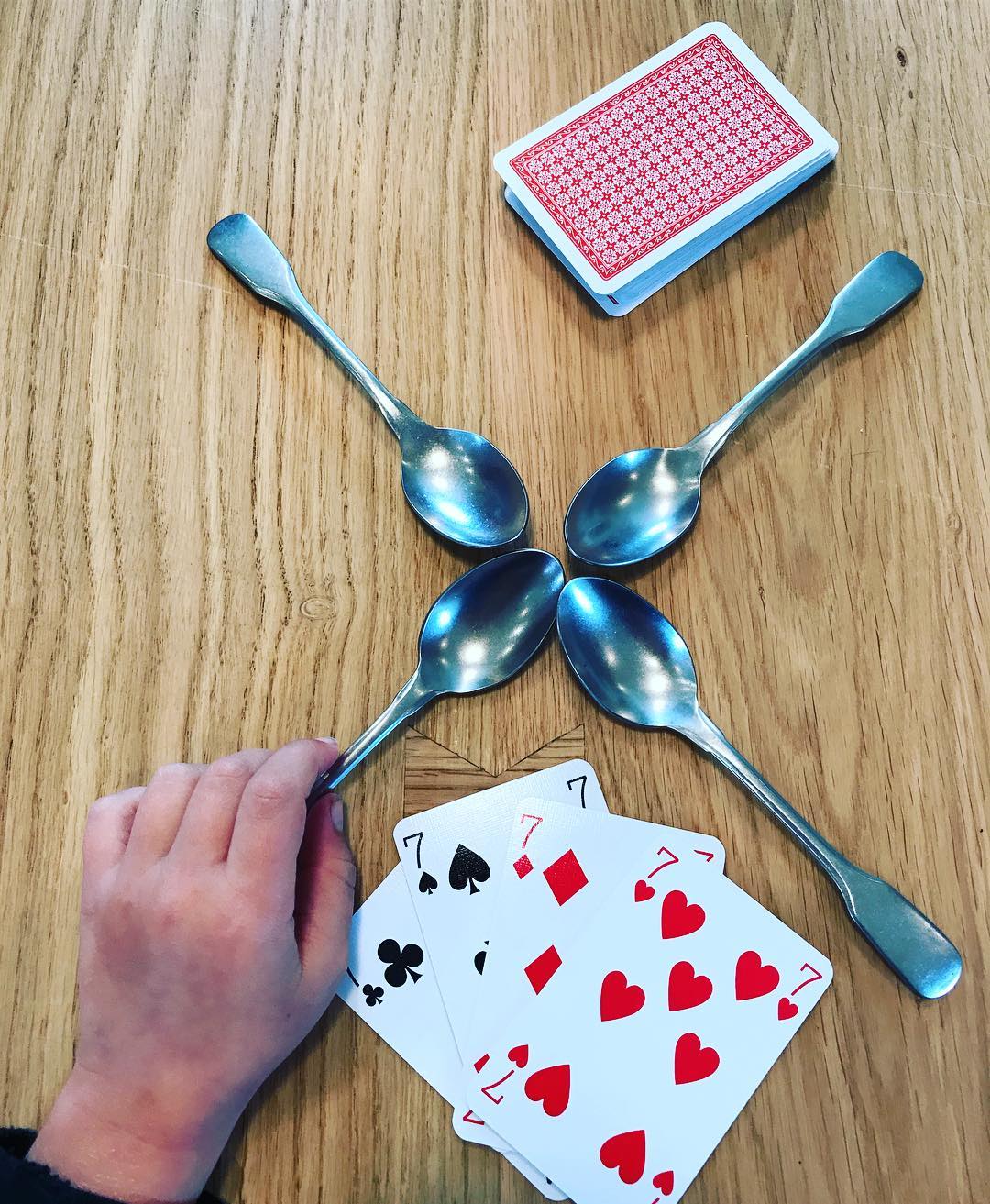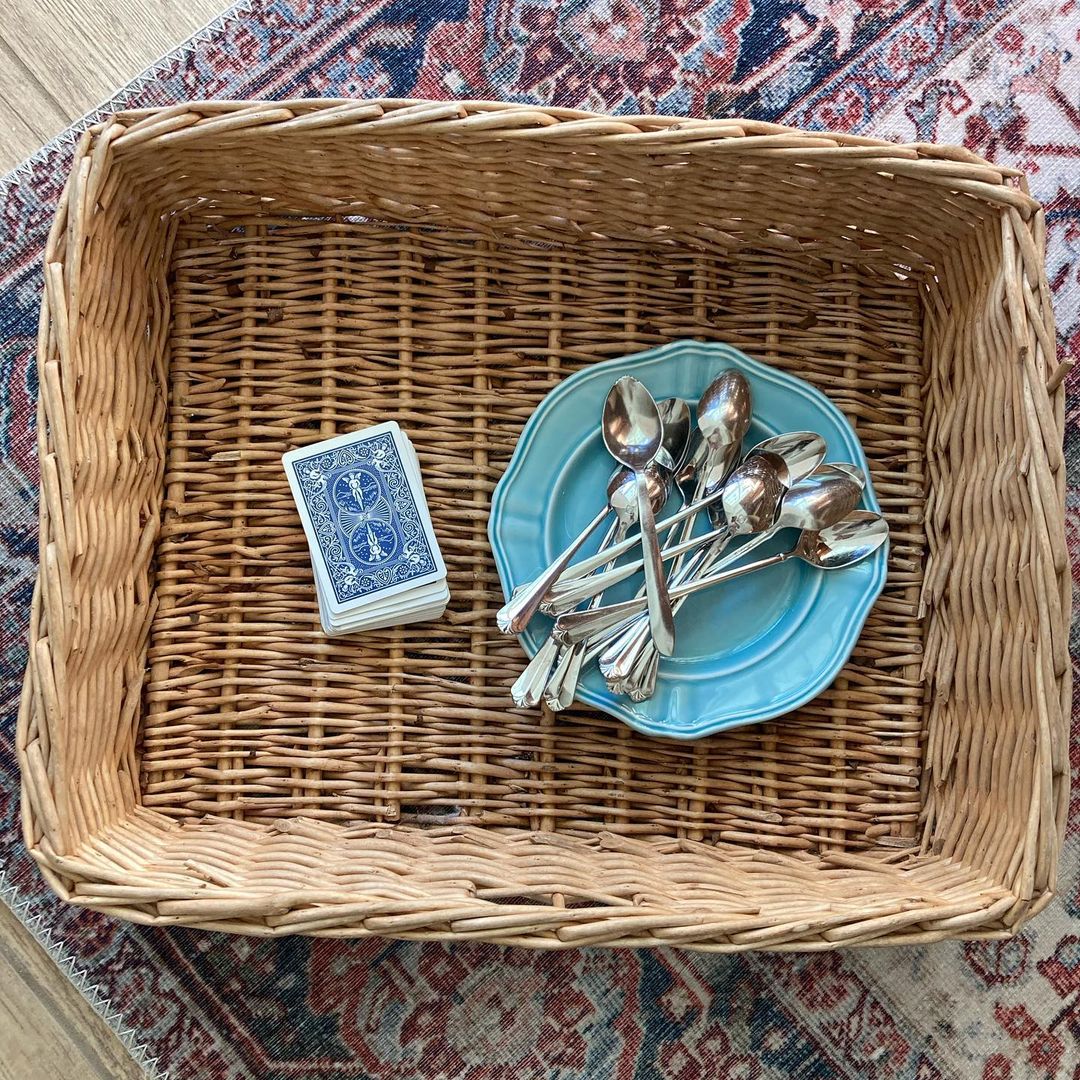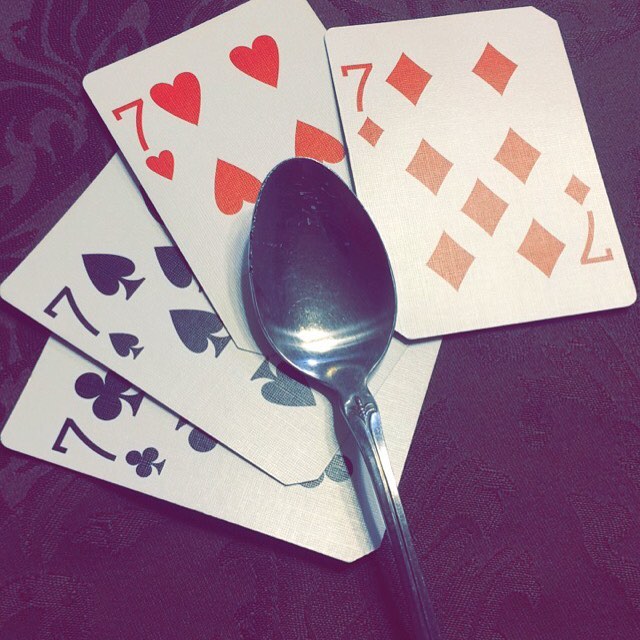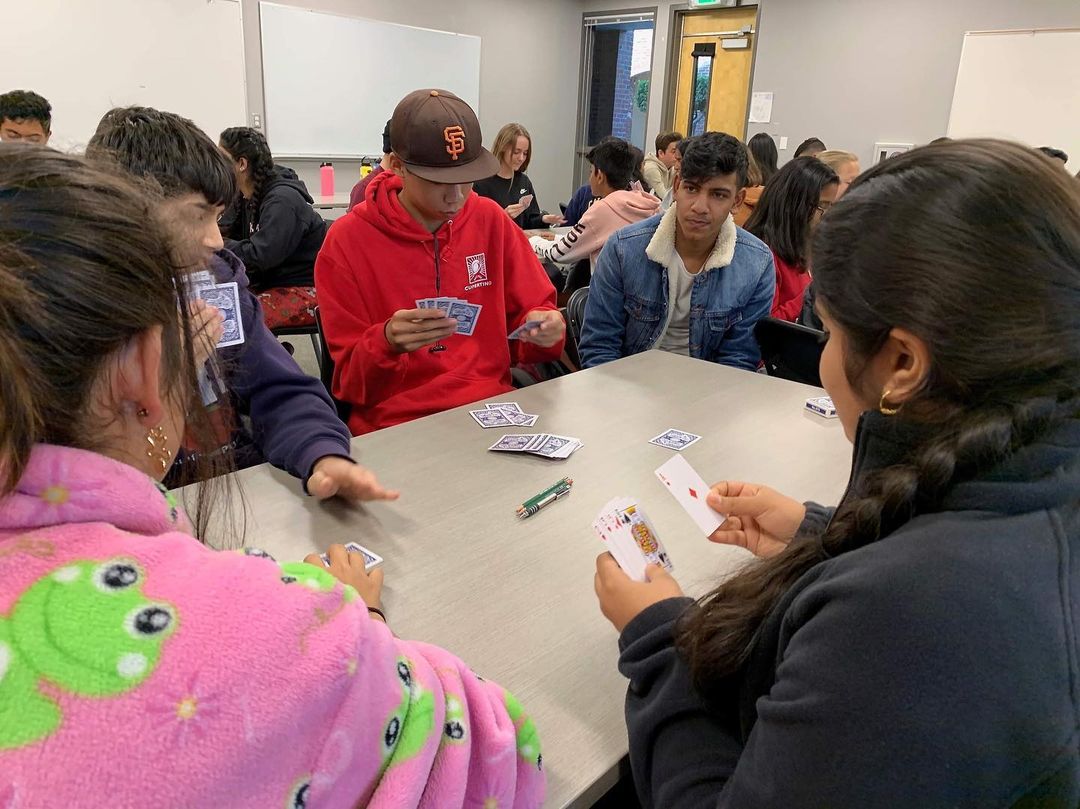One of the card games that may be played with a regular deck is Spoons. The game is played mainly with cards and calls for no unique tabletop or other preparations. Four to eight persons are the ideal number for playing this game indoors. The game is so simple that even young children may pick it up by watching a few rounds. The goal is straightforward: seize a spoon as quickly as possible while maintaining pinpoint timing. This is a guide to the game if you’ve never played Spoons before.
History of the Card Game “Spoons”
The card game “Spoons” is a spinoff of “Donkey,” which is itself a spinoff of “Pig.” Pig is a three-to-thirteen-player collecting card game with French-suited 52-card decks that started in the United States in the early 20th century.
The first player to gather a quartet (four of a kind) set his cards down “either quietly or furiously, as he may choose,” and the last person to put down cards became “Pig.” The number of rounds was predetermined, and the winner, or “Big Pig,” was the person who finished in last place the fewest times.
A variation of Pig is called “Donkey”. The only difference between the two games is that in Donkey, the first player to obtain a quartet shouts “Donkey!” and removes one of the objects from the center rather than touching their nose like they do in Pig. Maguire establishes the rule that whoever spells the word “donkey” first loses the game.
A variant of Donkey is what we know as the game Spoons. In Spoons, the winner is determined by who remains to the finish without spelling out the letters in the word.
What You Need to Play Spoons
To play Spoons, you’ll need a regular deck of 52 cards and as many spoons as participants minus one. If there will be six people playing, you need five spoons. If five people are playing, use four spoons, and so on.
The Game’s Objective
It’s a turn-based game where players attempt to build sets of four-of-a-kind or quads. As soon as one person does, others immediately begin reaching for spoons. The player that failed to get a spoon receives one letter. If a player spells “S-P-O-O-N,” they are eliminated. Whoever survives until the end is the victor.
Gameplay of Spoons
- Put all the spoons at the center of the table to begin. Some variants like the “Extreme Spoons” or “Hidden Spoons” require putting or hiding the spoons in other locations aside from the center of the table.
- The dealer may then give each player four cards. The remaining cards should be stacked face up on the table in front of the dealer.
- Each round begins with the dealer drawing a card from the top of the deck for a total of five cards in their hand.
- A card is discarded and given to the player to the dealer’s left, face down.
- Each player, in turn, takes a card from the player to their right, decides whether or not to keep that card, and then passes one card to the player to their left. The player to their left receives all discards.
- After the final player has discarded a card, it is placed in a discard pile, and a new round begins when the dealer takes a new card from the deck.
- Do not stop playing; pause briefly to reorganize the discard pile if the draw deck runs empty.
- Gameplay proceeds rapidly as long as no one has four of a kind. When the player with the quartet takes a spoon, everyone else can do the same.
- Whoever is left without a spoon receives a letter starting with the letter “S,” then “P,” until it forms the word “S-P-O-O-N.”
- The 1st player to receive 5 letters (spelling out S-P-O-O-N), or fail to get a spoon five times, will be eliminated from the game. The game will be repeated until there is only one left.
- The last player who did not spell out the word will be the winner of Spoons.
Variants of Spoons
- Stockpile: A standard deck of 52 cards is utilized, and the dealer will draw a card from the stack before passing it to the player on his or her right, who will then pass it to the next player in turn.
- Five Cards: Although each player is given five cards, a winning hand requires only four of a kind.
- Extreme or Hidden Spoons: Spoons are put at an extreme or hidden location, such as the edge of the play area, rather than in the center.
- Series: The winner of the Series is the person who remains in the game after all others have been eliminated.
- Two Winners: Played in a similar fashion as the Series variant, but the final two players each win half the pot.
- Tongue: When a player has a quartet in the card game Tongue, they must discreetly thrust out their tongue instead of grabbing a spoon.
Strategies Used in Spoons
- A bluff is acceptable. As long as you don’t really touch the spoons, you can pretend to grab them whenever you want. This could confuse the other players, leading them to grab a spoon too soon and risk elimination.
- Some players put their focus on the number of spoons. They count the spoon in case someone steals one without anyone noticing.
- Another strategy is continuing to play. If a player has already stuck out their tongue or collected a spoon, they can still pass and pick up to throw off their opponents, but they must maintain their quartet. Losing the quartet while touching the spoon will lead you to elimination.
Spoons is a great card game for the whole family because it doesn’t take long to learn and plays quickly, yet you’ll want to keep playing it. The game calls for spoons and a conventional deck of playing cards. Those with slower reactions will have a more challenging time enjoying Spoons, which is fun for people of all ages. Because you can only hold five cards at a time, this game is excellent for teaching young children how to count and developing their card-handling and fanning skills. The constant state of heightened awareness and chaos will be fun for everyone involved.
